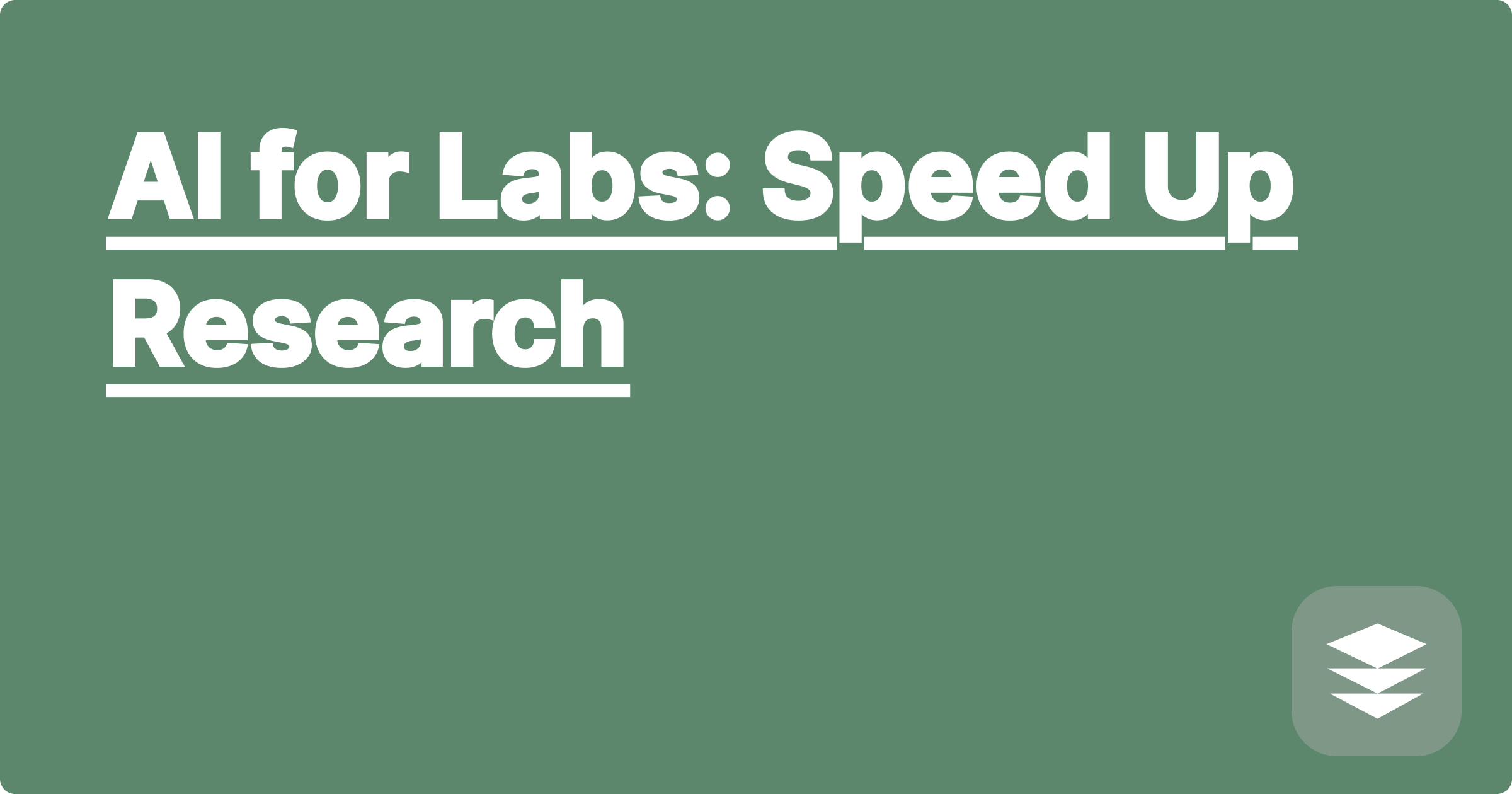
The relentless pace of scientific advancement demands ever-increasing efficiency in STEM research. Students and researchers alike are constantly challenged to optimize their time, manage vast amounts of data, and stay ahead of the curve in their respective fields. Artificial intelligence offers a powerful suite of tools to address these challenges and significantly accelerate research progress. This isn't about replacing human ingenuity; it's about empowering researchers with AI partners to amplify their capabilities and unlock new possibilities. This blog post explores how AI can revolutionize the lab experience, transforming how we learn, analyze, and discover. We'll delve into practical applications, highlighting both familiar and lesser-known AI tools, and share actionable strategies to integrate these tools into your workflow, boosting your productivity and impact.
For STEM students, particularly those grappling with demanding coursework or complex research projects, AI can be a game-changer. Imagine having a personalized AI assistant to help you navigate dense research papers, analyze complex datasets, or even brainstorm innovative experimental designs. This isn't science fiction; it's the reality of AI-powered learning and research. We'll discuss how you can leverage these tools not only to improve your academic performance but also to develop crucial skills for future careers in a rapidly evolving technological landscape. This post will equip you with the knowledge and strategies to harness the power of AI, transforming you into a more efficient and effective researcher.
STEM fields are inherently complex, demanding rigorous analysis, meticulous data processing, and extensive literature reviews. Traditional methods for conducting research can be time-consuming and often involve repetitive tasks. For example, analyzing large datasets can take weeks or even months using conventional statistical software. Similarly, sifting through countless research papers to identify relevant information can be a daunting and inefficient process. These challenges are further compounded by the ever-growing volume of scientific literature and the increasing complexity of research methodologies. Students often struggle to balance the demands of coursework, research, and other commitments, leading to burnout and decreased productivity. Researchers, on the other hand, face pressure to publish frequently and secure funding, which can necessitate long hours and intense workloads. This constant pressure can stifle creativity and hinder the pursuit of truly groundbreaking research.
AI offers a transformative solution to these challenges by automating tedious tasks, accelerating data analysis, and providing personalized learning experiences. AI tools like ChatGPT and Claude can assist with literature reviews, summarizing key findings from multiple papers and even generating initial drafts of research proposals. Wolfram Alpha can be invaluable for complex calculations, symbolic manipulations, and data visualization. Beyond these well-known tools, a wealth of specialized AI applications caters to specific STEM disciplines. For instance, tools like DeepChem and AlphaFold are revolutionizing drug discovery and protein folding research, respectively. By integrating these AI assistants into your workflow, you can free up valuable time and mental energy to focus on the more creative and intellectually demanding aspects of your work.
Integrating AI into your research process doesn't require advanced programming skills. Begin by identifying the most time-consuming or challenging aspects of your work. Are you struggling with data analysis? Is literature review taking up too much time? Once you've pinpointed the bottleneck, research AI tools specifically designed to address that challenge. Many platforms offer free trials or freemium versions, allowing you to experiment and find the best fit for your needs. Start with simple tasks and gradually incorporate more complex applications as you become more comfortable with the tools. For example, you might start by using ChatGPT to summarize research papers and then progress to using it to generate code for data analysis. Don't be afraid to experiment and explore different tools to discover what works best for you.
Consider a biology student researching the effects of a specific gene on plant growth. Traditionally, this would involve manually measuring plant growth over time and analyzing the data using statistical software. However, AI-powered image recognition tools can automate the measurement process, significantly reducing the time and effort required. Furthermore, machine learning algorithms can analyze the data to identify patterns and correlations that might be missed by traditional statistical methods. In another example, a chemistry student synthesizing a new compound could use AI-powered software to predict the optimal reaction conditions, minimizing the need for time-consuming trial-and-error experimentation. These practical applications demonstrate the tangible benefits of AI in accelerating research and enhancing learning outcomes.
To maximize the benefits of AI in your academic pursuits, consider implementing the following strategies. First, embrace the concept of a Generalized Personal AI (GPAI) partner. Think of GPAI as your personalized research assistant, capable of handling tasks like scheduling experiments, managing literature, and even brainstorming research ideas. Develop a system for interacting with your GPAI, treating it as a collaborative partner in your research journey. Second, explore niche AI tools tailored to your specific field. For example, mathematicians might explore tools like Mathpix Snip for converting handwritten equations into digital format, while physicists could utilize SimScale for complex simulations. Third, track your time usage before and after implementing AI tools to quantify the time savings and productivity gains. This data can be invaluable in demonstrating the impact of AI on your research efficiency.
Finally, remember that AI is a tool, not a replacement for human intellect. Use AI to augment your capabilities, not to outsource your critical thinking. By strategically integrating AI into your workflow, you can unlock new levels of productivity, accelerate your research progress, and achieve greater academic success. Start exploring the world of AI today and discover how it can transform your STEM journey.
AI for Labs: Speed Up Research
AI Homework Helper: STEM Made Easy
AI Design Tools: Engineering Made Fun
AI Solver: Conquer STEM Problems
AI Flashcards: Master STEM Concepts
AI for Data: Analyze STEM Data